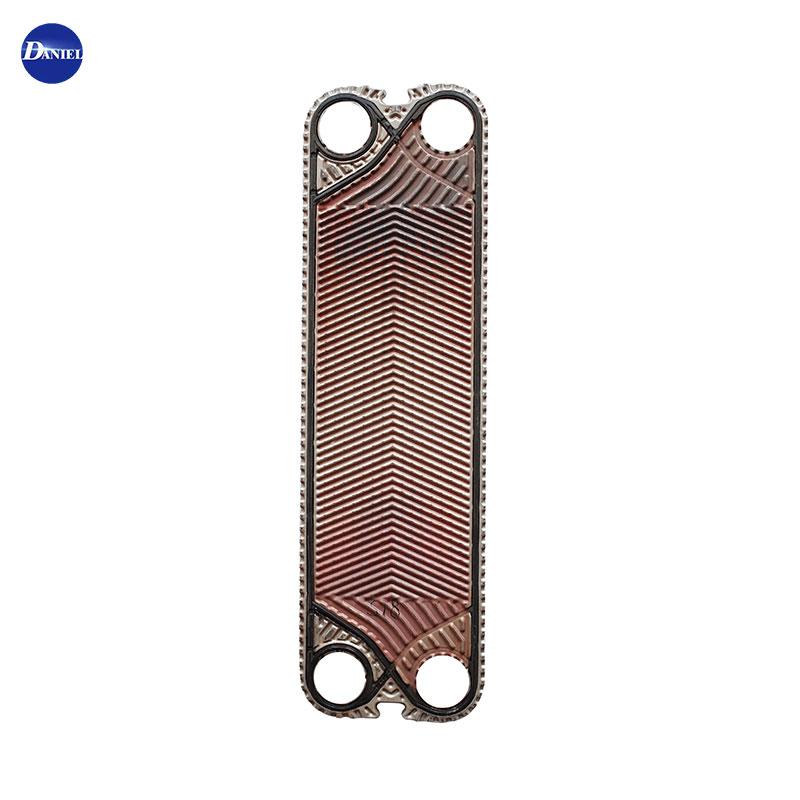
 English
English  Español
Español Português
Português русский
русский Français
Français 日本語
日本語 Deutsch
Deutsch tiếng Việt
tiếng Việt Italiano
Italiano Nederlands
Nederlands ภาษาไทย
ภาษาไทย Polski
Polski 한국어
한국어 Svenska
Svenska magyar
magyar Malay
Malay বাংলা ভাষার
বাংলা ভাষার Dansk
Dansk Suomi
Suomi हिन्दी
हिन्दी Pilipino
Pilipino Türkçe
Türkçe Gaeilge
Gaeilge العربية
العربية Indonesia
Indonesia Norsk
Norsk تمل
تمل český
český ελληνικά
ελληνικά український
український Javanese
Javanese فارسی
فارسی தமிழ்
தமிழ் తెలుగు
తెలుగు नेपाली
नेपाली Burmese
Burmese български
български ລາວ
ລາວ Latine
Latine Қазақша
Қазақша Euskal
Euskal Azərbaycan
Azərbaycan Slovenský jazyk
Slovenský jazyk Македонски
Македонски Lietuvos
Lietuvos Eesti Keel
Eesti Keel Română
Română Slovenski
Slovenski मराठी
मराठी Srpski језик
Srpski језик
Structural Features of Plate Heat Exchanger Gasket
2022-06-27
Plate Heat Exchanger Gasket is divided into unilateral flow and diagonal flow according to the flow form of the heat exchange medium. Correspondingly, the plate heat exchanger gasket is divided into unilateral flow and diagonal flow according to the flow form of the heat exchange medium. kind.
Unilateral flow means that the heat exchange medium flowing in from the right corner hole of the heat exchange plate finally flows out from the right corner hole. Similarly, the heat exchange medium flowing in from the left corner hole finally flows out from the left corner hole. Diagonal flow means that the heat exchange fluid flows from the right corner hole and then flows out from the left corner hole, or the fluid flowing in from the left corner hole flows out from the right corner hole, showing a diagonal flow pattern. In terms of heat exchange efficiency, the diagonal flow method is better than the unilateral flow, but the cost of the unilateral flow is relatively low, so the unilateral flow is generally used when the heat exchange efficiency can be satisfied.
 Plate Heat Exchanger Gasket can be divided into 3 forms according to the installation method on the heat exchange plate
Plate Heat Exchanger Gasket can be divided into 3 forms according to the installation method on the heat exchange plate
(1) Direct paste type, that is, after applying sealant on the sealing gasket, it is directly attached to the installation groove of the heat exchange plate.
(2) Rubber nail inlay type, that is, the assembly hole is designed on the heat exchange plate, and the rubber nail is designed on the edge of the sealing gasket. After the sealing gasket is placed in the installation groove, the rubber nail is embedded in the assembly hole.
(3) Buckle type, that is, there are buckle nails on the edge of the sealing gasket, and the sealing gasket is buckled on the heat exchange plate with the buckle nails. For the above three methods, the stick-type gasket has a simple structure and is the easiest to process, but it is relatively troublesome to install and disassemble. Inlaid and snap-fit gaskets have complex structures and are more troublesome to process, but are relatively easy to install and disassemble. Plate heat exchanger gaskets are divided into symmetrical and asymmetrical shapes according to the cross-sectional shape of the product. Symmetrical shapes are generally used for plates with diagonal flow. The asymmetric ground is a flat surface, and the upper sealing surface can be a flat surface, a curved surface, an inclined surface, and the like.
Unilateral flow means that the heat exchange medium flowing in from the right corner hole of the heat exchange plate finally flows out from the right corner hole. Similarly, the heat exchange medium flowing in from the left corner hole finally flows out from the left corner hole. Diagonal flow means that the heat exchange fluid flows from the right corner hole and then flows out from the left corner hole, or the fluid flowing in from the left corner hole flows out from the right corner hole, showing a diagonal flow pattern. In terms of heat exchange efficiency, the diagonal flow method is better than the unilateral flow, but the cost of the unilateral flow is relatively low, so the unilateral flow is generally used when the heat exchange efficiency can be satisfied.

(1) Direct paste type, that is, after applying sealant on the sealing gasket, it is directly attached to the installation groove of the heat exchange plate.
(2) Rubber nail inlay type, that is, the assembly hole is designed on the heat exchange plate, and the rubber nail is designed on the edge of the sealing gasket. After the sealing gasket is placed in the installation groove, the rubber nail is embedded in the assembly hole.
(3) Buckle type, that is, there are buckle nails on the edge of the sealing gasket, and the sealing gasket is buckled on the heat exchange plate with the buckle nails. For the above three methods, the stick-type gasket has a simple structure and is the easiest to process, but it is relatively troublesome to install and disassemble. Inlaid and snap-fit gaskets have complex structures and are more troublesome to process, but are relatively easy to install and disassemble. Plate heat exchanger gaskets are divided into symmetrical and asymmetrical shapes according to the cross-sectional shape of the product. Symmetrical shapes are generally used for plates with diagonal flow. The asymmetric ground is a flat surface, and the upper sealing surface can be a flat surface, a curved surface, an inclined surface, and the like.
X
We use cookies to offer you a better browsing experience, analyze site traffic and personalize content. By using this site, you agree to our use of cookies.
Privacy Policy





